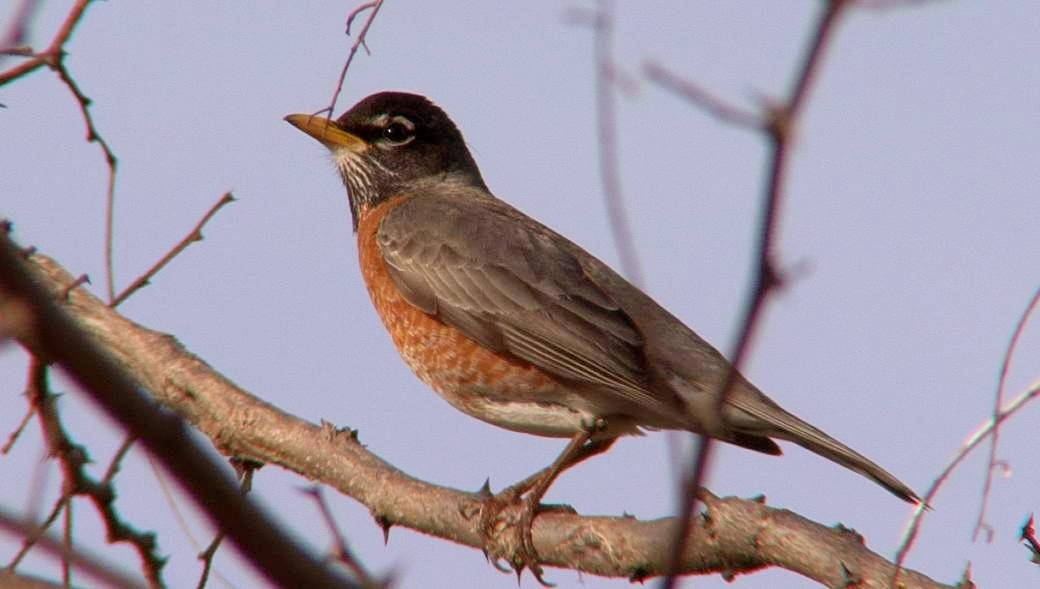 |
| American Robins could be considered the harbingers of winter for some folks |
 |
| In the cold weather Robins switch to a diet of fruit |
 |
| The Eastern Bluebird is also a species that overwinters with us |
 |
| Note the similarities in body and beak shape between the Bluebird and this Veery |
 |
| On the ground the Hermit Thrush's foraging technique is much like that of the Robin |
 |
| An immature Robin is very spotted, which makes it look more like a Wood Thrush |
 |
| A Wood Thrush sings in the early summer - note the heavily spotted breast |
It's not unusual to have a flock of
100 or more Robins spend the entire winter at our nature preserve. Their
stay is contingent on the availability of wild fruit including grapes and apples . Many birds including Robins switch over to a diet of primarily fruit in
the colder months. This is understandable since insects and other invertebrates
become difficult to obtain.
Are the Robins that spend the winter with us the same individuals
that breed here during the summer? Most probably not. Our summer Robins migrate
south, while their Canadian Cousins arrive here from the north and essentially
replace them in the habitat. To us on the ground it just looks like the Robins
never left.
 |
| Robins and European Starlings feeding together on European Buckthorn Berries |
 |
| Cedar Waxwings are also wintertime feeding companions of Robins |
 |
| Cedar Waxwing |
 |
| European Starling |
 |
| Robins retain similar plumage throughout the year |
 |
| Any woodland thrush found at this time of year would most likely be the Hermit Thrush |
 |
| Late lingering Brown Thrashers are sometimes responsible for erroneous Wood Thrush sightings |
 |
| A few Hermit Thrush might remain north for the entire winter season |
 |
| Swainson's Thrush, like the Wood Thrush and Veery are never found here in winter |
 |
| A young Bluebird perches on one of Spring Farm's Windmill towers |
No comments:
Post a Comment